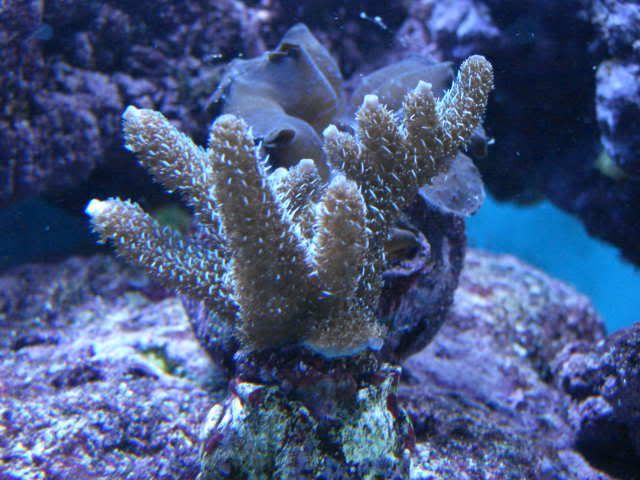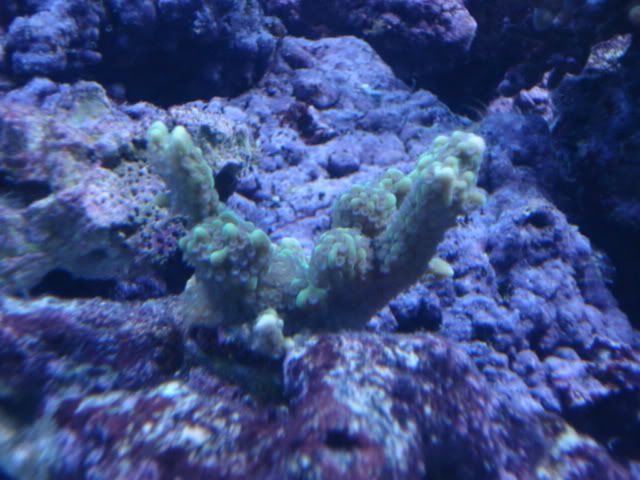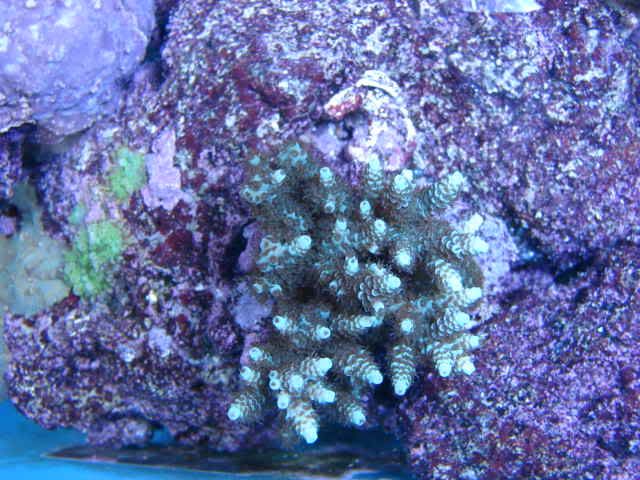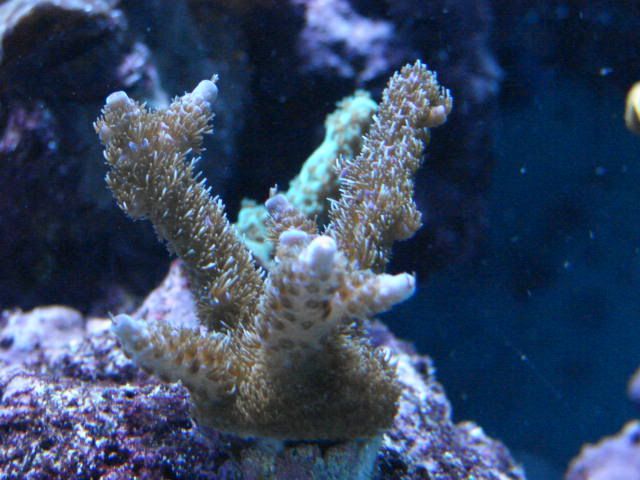
 |
|
#141
|
|||||
|
|||||
|
Quote:
__________________
180 starfire front, LPS, millipora Doesn't matter how much you have been reading until you take the plunge. You don't know as much as you think. |
|
#142
|
|||||
|
|||||
|
Hey all, well alot of stuff has happened i have been away and busy as always. trying to get the skimmer thing sorted out i have a dual 62" skimmer powered by a PCX 70 that i dont think is cutting it. may be i had to take one of the extensions off to get the skimmer going... other then that. daily drops and checking the levels
still maintaining Ultra BIO 1 drop every day. Ultra BAK Mike im empty here i have about 2 days left. 5 ml per day. Ultra clam food feeding every second day. Well i can't keep it any longer the color are amazing in the tri color they are alot bright er and lighter to look at . alot of the frags are coloring up so nice i really need to sit down here to snap some pictures ,but so busy with work sorry i will make a effort to night to get some pictures on i promise..... i'm hoping to get some top down picture up if i can figure how to get the glare out of there....... oh ya i will be posting some new levels too Mike to allow you to see what the tank is doing ..
__________________
180 starfire front, LPS, millipora Doesn't matter how much you have been reading until you take the plunge. You don't know as much as you think. |
|
#143
|
|||||
|
|||||
|
Bak on its way by Friday, I need your address!
Yes some GOOD pictures would be nice |
|
#144
|
|||||
|
|||||
|
ok thanks again mike, can you send me a double dose of bak since im going thur this at 5 ml per day. i can help with shipping if you want me too let me know since this you coming out of your pocket...
here are the levels for ya temp 77.9 1.025 ALk 10DKH CAL 460 NO3 15 its going up from the lack of bak that i have and being away.. PO 4 0 MAg 1350 still doing the 10 gal Water change hoping that this skimmer is going to rip into the nitrates i hope . pictures to follow other then that been dosing liek crasy here turning off the skimmer after i dose too... pmed you my addy
__________________
180 starfire front, LPS, millipora Doesn't matter how much you have been reading until you take the plunge. You don't know as much as you think. |
|
#145
|
|||||
|
|||||
|
You really need to be using Lith rock now so we can get you onto other stuff and also give the tank stability then the nitrates would not ebb and flow so much.
If you did this you would ahve to lower your DKH down to 7.5 max though, even now for using this method its too high. Lith systems call for lower DKH |
|
#146
|
|||||
|
|||||
|
"You really need to be using Lith rock now " can you explain--what is lith rock?
thanks |
|
#147
|
|||||
|
|||||
|
What is Ultra Lith Rock - Or its actual organic name - Zeolite rock
The name Zeolite goes back to the greek words “Zeo” (boiling) and “lithos” (stone). Upon heating, these minerals appear to be boiling. There are about 40 naturally occurring Zeolites, which can form many more mixed minerals of variable composition. Also huge amounts of Zeolites are produces synthetically every year, for example for laundry detergents. Ultralith is a natural Zeolite. Zeolites are minerals and consist mostly of silica and aluminium plus other elements like Sodium, Potassium, Iron, and Manganese, which determine the physical properties of the mineral. The most interesting feature of Zeolites is their crystal structure. You can think of it as a sponge with many small and large holes. Large and small should be seen in perspective of the scale, the small holes have the size of single molecules, about one billionth of a meter. The size of these holes depends on the chemical composition of the mineral. These pores contain water, which causes the boiling when the minerals are heated. What makes these minerals so special is their ability to absorb specific compounds. Which compound is absorbed depends on the size and shape of the holes in the crystal structure, which is depending on the chemical composition. Therefore, depending on their composition Zeolites preferentially absorb different compounds. Ultralith is specifically chosen to absorb ammonium (NH4+). However, thinking of Zeolites just as absorbers is a bit oversimplified. They are actually ionexchangers. The holes to which a compound binds are not empty but rather filled with sodium or potassium. As soon as a preferred compound is available, another compound, usually sodium and potassium, is given off and the compound will be absorbed. This reaction, the replacement of one ion for another ion, is called ion-exchange. In marine aquaria the liberation of sodium or potassium and therefore the resulting ionic imbalance is negligible as they are major constituents of seawater anyways. The absorption of ammonium is just one half of the story. The other half is where the biology comes in. As already mentioned, zeolites have a very porous structure; under the microscope they look almost like a sponge. The larger holes are much bigger than the small ones, about a thousand times bigger. This porous structure creates a large surface area for bacteria to settle on. As the ammonium is adsorbed by the crystal structure, the bacteria living on the Zeolite get their food delivered to their doorstep. The overall reaction that takes place in a Zeolite filter is the removal of ammonium and its conversion into nitrogen gas, which goes off into the atmosphere. The removal of ammonium takes place in three steps 1) Absorption of ammonium, 2) Oxidation of ammonium, 3) Denitrification. As already explained, the ammonium will be adsorbed onto the surface of the mineral due to an ion-exchange process. At the surface of each mineral grain, oxygen is still available. Here the ammonium is oxidised by autotrophic bacteria to nitrate according to the following formula 2NH4+ + 5O2 = 2NO3 + 4H2O This process consumes oxygen, thereby creating an anoxic environment inside the mineral grains. If this would be the only process that occurs in a Zeolite filter such a system would actually produce nitrate, and its use for aquaria would be rather limited. Deeper inside the mineral grain, heterotrophic bacteria will consume the nitrate that is produced in the outer layer. This process is called denitrification, and occurs in two steps, from nitrate to nitrite, and further to Nitrogen gas which will diffuse out of the water into the atmosphere. The overall formula for both processes is given below 5CH2O + 4 NO32- = 4 HCO3- + CO2 + 3 H20 + 2 N2 Because heterotrophic bacteria carry out this process, they need to be fed with a suitable carbon source such as UltraBak. By addition of suitable bacterial strains, e.g. UltraBio the removal of nutrients can be accelerated. The different bacterial strains work as a team, the products of one strain are food for the next one. The feeding of the bacteria substantially increases the bacterial biomass inside the filter, which again results in a binding of phosphate. These bacterial films have to removed regularly by shaking the filter. The removed material can either be removed by the skimmer or serve as food to some animals, especially filter feeders. In very nutrient poor systems the removed bacterial films can be an important food source for the corals. Eventually the bacteria will clog up the Zeolites and the material has to be exchanged. Last edited by Aqua-Digital; 03-19-2009 at 02:01 AM. |
|
#148
|
|||||
|
|||||
|
OK Here are some comparsions i hope this is going to look right i tried to get the best angle and keeping the pic at the smae settings.. so I'm not touching up anything.
        
__________________
180 starfire front, LPS, millipora Doesn't matter how much you have been reading until you take the plunge. You don't know as much as you think. |
|
#149
|
|||||
|
|||||
|
Next step power traces elements and Ultra Lith rock
 |
|
#150
|
|||||
|
|||||
|
ok then lets do it what do I need to do then you convinced me.....
__________________
180 starfire front, LPS, millipora Doesn't matter how much you have been reading until you take the plunge. You don't know as much as you think. |